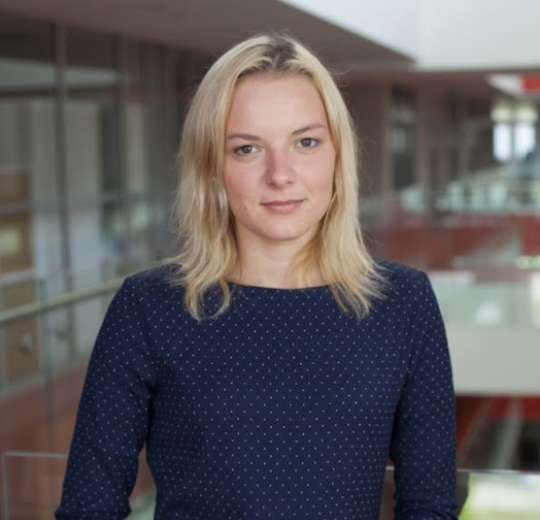DEPARTMENT OF STEM CELL BIOLOGY
- Home
- Research
- Scientific Departments
- DEPARTMENT OF STEM CELL BIOLOGY
1. A.Čebatariūnienė, A.Jarmalavičiūtė, V.Tunaitis, A.Pūrienė, A.Venalis, A.Pivoriūnas. Microcarrier culture enhances osteogenic potential of human periodontal ligament stromal cells. Journal of Cranio-Maxillofacial Surgery. 2017 Jun;45(6):845-854.
_____
2. A. Jarmalavičiūtė, A.Pivoriūnas. Neuroprotective properties of extracellular vesicles derived from mesenchymal stem cells. Neural Regenen Res. 2016 Jun;11(6):904-905.
_____
3. A. Jarmalavičiūtė, A.Pivoriūnas. Exosomes as a potential novel therapeutic tools against neurodegenerative diseases. Pharmacological Research. 2016.113(Pt B):816-822.
_____
4. V. Kašėta, A. Vaitkuvienė, A. Liubavičiūtė, R. Maciulevičienė, A Stirkė, G. Biziulevičienė. Quantitative evaluation of the transplanted lin- hematopoietic cell migration kinetics. Transplant Immunology. 2016; 34: 54-59.
_____
5. A. Jarmalavičiūtė, V.Tunaitis, U. Pivoraitė, A. Venalis, A.Pivoriūnas. Exosomes from dental pulp stem cells rescue human dopaminergic neurons from 6-hydroxy-dopamine-induced apoptosis. Cytotherapy. 2015;17 (7):932-939.
_____
6. U. Pivoraitė, A. Jarmalavičiūtė, V. Tunaitis, G. Ramanauskaitė, A. Vaitkuvienė, V. Kašėta, G. Biziulevičienė, A. Venalis, A. Pivoriūnas. Exosomes from human dental pulp stem cells suppress carragenaan-induced acute inflammation in mice. Inflammation. 2015; 38 (5): 1933-1941.
_____
7. A. Vaitkuviene, V. Ratautaite, A. Ramanaviciene, K. Sanen, R. Paesen, M. Ameloot, V. Petrakova, M. McDonald, F. Vahidpour, V. Kaseta, G. Ramanauskaitė, G. Biziuleviciene, M. Nesladek, A. Ramanavicius. Impact of diamond nanoparticles on neural cells. Molecular and Cellular Probes. 2015; 29: 25-30.
_____
8. A. Vaitkuviene, M. McDonald, F. Vahidpour, JP. Noben, K. Sanen, M. Ameloot, V. Ratautaite, V. Kaseta, G. Biziuleviciene, A. Ramanaviciene, M. Nesladek, A. Ramanavicius. Impact of differently modified nanocrystalline diamond on the growth of neuroblastoma cells. New Biotechnology. 2015; 32: 7-12.
_____
9. G. Ramanauskaitė, D. Žalalytė, V. Kašėta, A. Vaitkuvienė, L. Kalėdienė, G. Biziulevičienė. Skin extracellular matrix components accelerate the regenerative potential of Lin– cells. Central European Journal of Biology. 2014; 9 (4): 367-373.
_____
10. A. Vaitkuviene, V. Ratautaite, L. Mikoliunaite, V. Kaseta, G. Ramanauskaite, G. Biziule-viciene, A. Ramanaviciene, A. Ramanavicius. Some biocompatibility aspects of conducting polymer polypyrrole evaluated with bone marrow-derived stem cells. Colloids and Surfaces A: Physi-cochemical and Engineering Aspects. 2014; 442: 152–156.
_____
11. A. Jarmalavičiūtė, V. Tunaitis, E. Strainienė, R. Aldonytė, A. Ramanavičius, A. Venalis, K. E. Magnusson and A. Pivoriūnas. A New Experimental Model for Neuronal and Glial Differentiation Using Stem Cells Derived from Human Exfoliated Deciduous Teeth. J Mol Neurosci. 2013; 51 (2): 307-317.
_____
12. A. Vaitkuvienė, V.Kašėta, J. Voronovič, G. Ramanauskaitė, G. Biziulevičienė, A. Ramanavičienė, A. Ramanavičius. Evaluation of cytotoxicity of polypyrrole nanoparticles synthesized by oxidative polymerization. Journal of Hazardous Materials. 2013; 250-251: 167-174.
TITLE: IN VITRO MODELLING OF HUMAN BLOOD BRAIN BARRIER
PATHOLOGY IN ALZHEIMER’S DISEASE
LEADER: A.Verkhratsky
FUNDING: Operational programme for the European Union funds “Development of competences of scientists, other researchers and students through practical research activities”
DURATION: 2017-2021
_____
TITLE: DEVELOPMENT OF A NEW HUMAN PLURIPOTENT STEM CELL-BASED RE-PORTER ASSAYS FOR TESTING OF ANTI-INFLAMMATORY AND ANTI-OXIDATIVE PROPERTIES OF EXOSOMES
LEADER: A. Pivoriūnas
FUNDING: Operational programme for the European Union funds
“Targeted research in smart specialisation areas”
DURATION: 2017-2021
_____
TITLE: NEW THERAPEUTIC STRATEGIES FOR CHRONIC NEURODEGENERATIVE DISEASES USING EXOSOMES DERIVED FROM HUMAN STEM CELLS
LEADER: A. Pivoriūnas
FUNDING: National research programme “Healthy ageing”
DURATION: 2015-2018
- Malakauskaite Paulina
2023-10-01 – 2027-09-30
PhD supervisor – dr. Vytautas Kašeta
Topic - Study of mitochondrial transfer and transplantation of cells of different origin and activation.
- Pociute Agne
2022-10-01 – 2026-09-30
PhD supervisor – dr. Augustas Pivoriunas
Topic - In vitro modelling of human blood brain barrier pathology in neurological disorders.
- Romenskaja Diana
2022-10-01 – 2026-09-30
PhD supervisor – dr. Augustas Pivoriunas
Topic - The effects of extracellular vesicles on the inflammatory response of human microglia.
MODELLING ALZHEIMER’S DISEASE IN VITRO
New technologies that emerged during the last decade allow to generate patient-specific iPSCs. iPSCs can be used to develop disease model. A novel drug screening platforms open up new opportunities for the bio-pharmaceutical industry.
Progress in understanding Alzheimer’s disease (AD) has been hindered by a lack of suitable disease models, reflected in an inability to translate results from animal studies to successful human therapies. We are currently running project ,,In vitro modelling of human blood brain barrier pathology in Alzheimer’s disease‘‘. This project was financed from the EU structural funds (599459 Eur) and is implemented under The Global Grant measure.
Project duration 2017-2021. We are developing a relevant human cellular model to study the blood-brain barrier (BBB) in AD pathology. For this purpose we are establishing a human BBB co-culture model using astrocytes and brain endothelial cells derived from healthy controls and AD patients. This will represent a fundamentally novel approach to study human pathology using human cells. The proposed model can be applied for preclinical screening of relevant pharmacological tools. Project leader Prof. A. Verkhratsky is an internationally recognised scholar in the field of cellular neurophysiology.
ANIMAL STEM CELL RESEARCH GROUP
Our group perform animal studies in vivo. Our studies provide valuable knowledge regarding the behaviour and in vivo properties of stem cells, which is particularly important for cell therapy. The anti-inflammatory effects and migratory properties of the hematopoietic stem cells isolated from mice have been evaluated using the contact hypersensitivity model. The impact of distinct populations of hematopoietic stem cells on the healing of wounds has also been established using a life-size skin wound model. We also tested the biocompatibility properties of some new materials and assessed the possibility that they could be used in biomedical ap-plications.
We also routinely isolate hematopoietic stem cells and MSCs from different laboratory animal lines. We are able to characterise, differentiat, evaluat metabolic activity and secretory factors of these cells. After stem cells evaluation in vitro, we transplant them to animal model. This technic help us to observe migration kinetics, ability to survive and regeneration capacity of stem cells in living organism conditions.
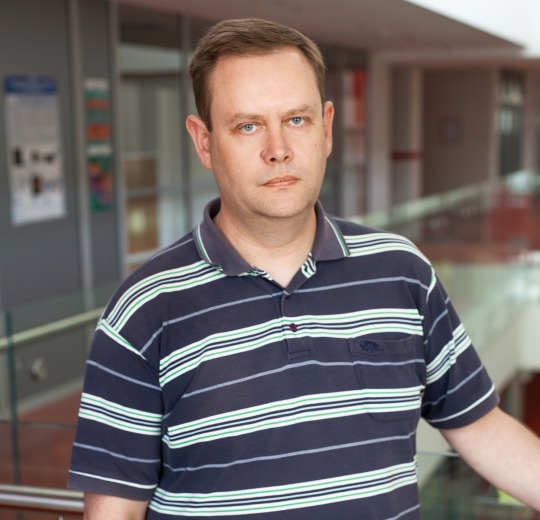
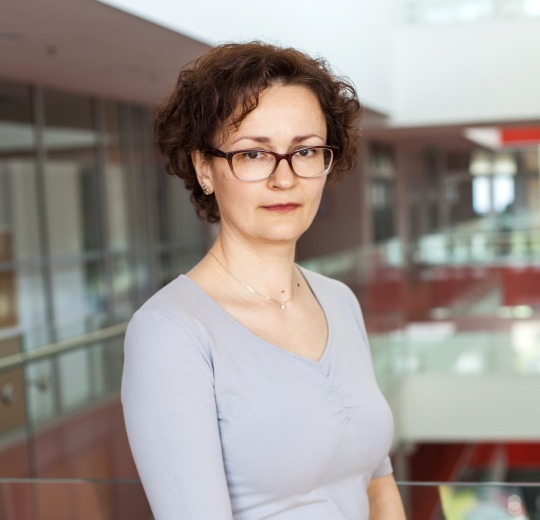
PhD Aida Kaušylė
Senior researcher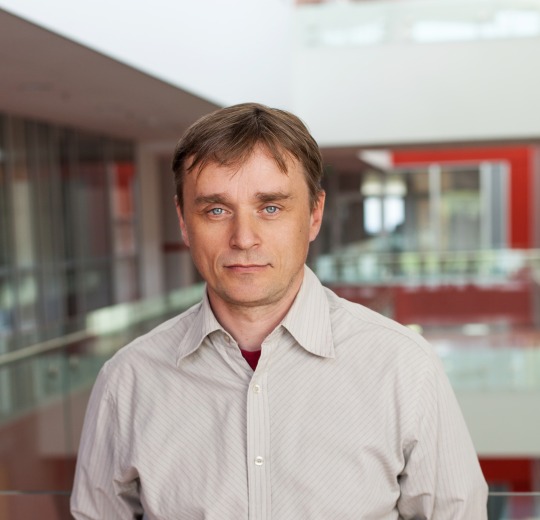
PhD Virginijus Tunaitis
Senior researcher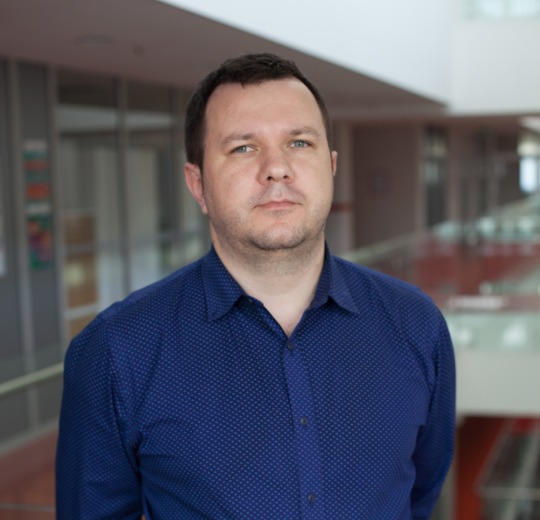
PhD Vytautas Kašėta
Senior researcher